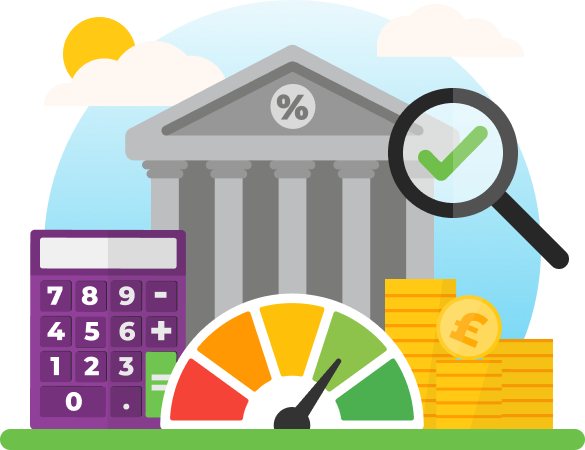Remortgaging is the process of taking out a new mortgage deal to replace your current mortgage. If you remortgage with your existing lender, this is known as a "product transfer". When you remortgage with a different lender, a conveyancer is required to complete the process.
On average there are 39,000 homeowner remortgages every month in the UK. Many homeowners will remortgage when the term of their current mortgage comes to an end. Other reasons to remortgage include getting a better interest rate, to release equity or pay off their mortgage quicker
How Does Remortgaging Work?
Remortgaging is when a new mortgage is taken out on a property to pay off an existing mortgage on the same home.
For example, if your house is worth £300,000 and you have paid off £100,000 then you will have an outstanding mortgage of £200,000. Your new mortgage will be used to pay off this remaining amount.
This can be done with your current lender (via product transfer) or with a different lender. Be aware that if you remortgage before your term ends you could be subject to fees, including early repayment charges (ERC). You will also need to factor in the cost of a conveyancer if you remortgage with a different lender.

Compare Mortgage Brokers
Accredited mortgage brokers
Used by over 1.5 million movers in the UK
What Fees Are Involved?
Below we've broken down the average cost of remortgaging in the UK:
| Fee | Cost (£) |
|---|---|
| Solicitor Fees (if applicable) | £454 |
| Conveyancing searches (if applicable) | £250-£450 |
| Electronic Bank Transfer | £34 |
| Electronic ID Check | £12 |
| Title Deeds Copy | £11 |
| Deed Release Fee (Admin Charge) | £175 |
| Land Registry Fee | £6 |
| ERC (if applicable) | 1-5% of the remaining mortgage amount |
| Mortgage Exit Fee (if applicable) | £58 |
| Product Fee | £1,500 |
| Mortgage Broker (if applicable) | £450 |
| Valuation | £150-£1,500 |
Averages taken from Compare My Move data, Uswitch and Natwest
How Long Does it Take?
It normally takes between four and eight weeks to remortgage, but it can be longer if there are any delays. If you stay with the same lender, a product transfer may be quicker than a remortgage.
Using a different lender may take longer, especially as you will need to hire a conveyancer. To ensure a swift process, return any required documents to your conveyancer as soon as possible. Be prepared with anything the lender needs too.
Read more on How Long Does it Take to Remortgage?

Compare Mortgage Brokers
Accredited mortgage brokers
Used by over 1.5 million movers in the UK
Why Remortgage Your Home?
Here are some common reasons why homeowners choose to remortgage:
Your Current Deal is About to End
If you have a fixed-rate mortgage, the interest rate on your mortgage will be fixed for a set amount of time. This is normally two, three or five years.
When the fixed-rate ends, you’ll usually be moved to your lender’s standard variable rate (SVR). The SVR will normally be higher than the fixed rate you were paying, meaning your monthly payments will increase.
To Change the Length of Your Mortgage Term
Some people choose to shorten their mortgage term after a change in financial circumstances, such as a pay rise. This may result in higher monthly payments but repaying the mortgage in a shorter timeframe.
You can also remortgage to repay your mortgage over a longer term. This would mean lower monthly payments but more interest over the length of the mortgage term, costing you more in the long run.
If Your Circumstances Change
If your circumstances change drastically, it may be worth considering remortgaging your home if it aids you financially or suits a change in lifestyle. For example, if you own a house with your partner and you split up, one of you may want to buy the other out. This will involve remortgaging so that the mortgage is held by just one person.
When Should I Remortgage?
Timing can play a role in the cost-effectiveness of a remortgage, particularly if early repayment charges apply. It's worth understanding all fees and potential savings when considering your options.
At the End of Your Fixed-Rate Term
For those on a fixed-rate mortgage, your monthly payments will be fixed for a set amount of time. When the fixed-rate period ends, most people will be moved to their lender’s standard variable rate (SVR). Usually, this will be a higher rate and your monthly payments will become more expensive. At this stage, many homeowners consider remortgaging if alternative deals appear more favourable.
If you want to remortgage or move house before the end of your fixed-rate term, you will normally have to pay early repayment charges (ERCs). Some homeowners aim to complete their remortgage after their fixed rate ends to avoid early repayment charges.
When Interest Rates Are Low
Some people opt to remortgage when interest rates are low. This can mean lower monthly repayments and a better mortgage deal. However, you may incur charges if you remortgage before the end of your current mortgage term.

Compare Mortgage Brokers
Accredited mortgage brokers
Used by over 1.5 million movers in the UK
Should I Remortgage With the Same Lender?
You are not obliged to remortgage with your current lender, but it can be worth seeing what they would offer. If you stay with your current lender, this will be a “product transfer” rather than a remortgage. This option is quicker and you won't be required to hire a conveyancer.
However, it may be worth researching other lenders and mortgage products for better deals. You can do this yourself or enlist the help of a mortgage broker. They can help you explore a range of products and lenders, including deals that may not be available directly to consumers.
Do I Need a Solicitor?
If you are staying with the same lender, the process of "product transfer" does not need a conveyancer.
However, if you are switching to a different lender, you will need a remortgage solicitor. They will handle the legal details and administration of your new mortgage offer. Lenders may suggest their own solicitors, but it is worth checking what fees apply before proceeding. Some lenders may include this as part of the remortgaging deal but this may not be the case with all lenders.
You are not obliged to use the conveyancer they suggest and are able to research your own should you wish. Again, this will come with an additional cost.
Be aware that if you are adding someone or removing someone from the mortgage, you will need to appoint your own solicitor.

Compare Mortgage Brokers
Accredited mortgage brokers
Used by over 1.5 million movers in the UK
How To Prepare To Remortgage Your Home
Below we’ve listed a few things you can do to prepare for your product transfer or remortgage.
Check Your Credit Score
This is especially recommended if there have been changes to your circumstances or spending. Additionally, if you are opting for a different deal or a different lender, the requirements for a mortgage may differ. In this case you may want to check what credit score you need for your new mortgage.
Do Your Research
This can be done via mortgage comparison sites or individual lenders' sites. Experts suggest that individuals look at direct-only deals and not just the deals available to mortgage brokers.
Ask a Professional
Some people choose to work with mortgage brokers, who may have access to broker-only deals and can assist with comparing mortgage options.
Get a Valuation
You may want to find out how much your home is worth before you decide to remortgage, as the value may have changed since you purchased the property.
The cheapest way to do this is to ask an estate agent to value your home. Most estate agents will give a “no obligation” quote. As part of your remortgage application, the lender will arrange for a valuation to be sure the property is adequate security for the loan.
What Documents Do I Need?
Under Money Laundering Regulations, lenders are required to verify your identity to guard against money laundering and fraud. Below we have listed the key documents you will need for remortgaging:
Bank statements for the past three months
Payslips for the past three months
Accounts and tax returns for the past one to three years (depending on the lender) if you are self-employed
Proof of any bonuses and/or commission
Your latest P60
ID document, normally a passport and/or driving license
Proof of address, such as a utility bill

Compare Mortgage Brokers
Accredited mortgage brokers
Used by over 1.5 million movers in the UK
FAQs
Below we’ve answered the most frequently asked questions relating to remortgaging:
Do I Need a Deposit to Remortgage?
No. You will be able to use the equity you have in your home to determine the LTV. However, you can add money to the equity in your home so you can take out a smaller mortgage. This allows you to pay your mortgage off quicker with lower monthly repayments.
Can I Remortgage with Negative Equity?
Negative equity happens when you owe more on your mortgage than your home is actually worth. Unless you have savings that can repay the difference between the value of your home and your mortgage, this can make it difficult to remortgage.
In this case, some people seek help from a mortgage broker, who may be familiar with lenders that consider applications from customers in negative equity.
What is the Difference Between a Remortgage and a Second Charge Mortgage?
A second-charge mortgage allows you to use any equity (the percentage of the home you own outright) as security against a loan. This would mean you would have two mortgages on the home. Remortgaging is replacing your mortgage with a different mortgage.
Can I Remortgage a Buy to Let?
Yes, it is possible to remortgage a buy-to-let property.
A Buy to Let mortgage works in a similar way to a traditional remortgage on a residential property. However, lenders may want to know details like the monthly rental income, your age, the type of property and your experience as a landlord.
Can I Remortgage to Pay Off Debt?
While remortgaging to pay off debt is an option, it's important to consider the risks. Consolidating debt into a mortgage may increase the overall repayment cost and could affect home ownership if repayments aren’t maintained.
What Are Surplus Funds When I Remortgage?
Surplus funds are monies due to you following completion of your remortgage. This occurs when you borrow more money from your new lender than you need to pay off your existing lender. Your conveyancing solicitor will arrange to send any surplus funds directly to you on the day of completion.


